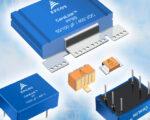GE and NTT DOCOMO to Provide Industrial Equipment for IoT Solutions
TOKYO – GE Energy Japan Co., Ltd. (GE) and NTT DOCOMO, INC. (DOCOMO) have signed a memorandum of understanding today toward a business alliance to provide a new Internet of Things (IoT) solution. The partnership will combine GE Digital Energy’s MDS Orbit Platform, a wireless router for industrial equipment, and DOCOMO’s communication module. GE’s MDS Orbit Platform with DOCOMO’s embedded communication module will enable private companies with infrastructure facilities, as well as customers of local governments, to monitor real-time operational data such as temperature and vibration on infrastructure equipment. The solution will provide data for remote areas on roads and bridges, plants, electricity, gas, and water. By combining the operation data acquired by the Orbit platform with DOCOMO’s application on the “Toami” IoT cloud platform, users will be able to manage the data on their smartphones and tablets. This feature can serve as a predictive diagnostic tool to prevent failures and assist in preserving aging facilities. With the cloud platform, customers will be able to receive added value instantly without having to make any additional capital investments. GE’s Orbit platform employs robust housing for industrial equipment data communication, and includes advanced security technology and Class I Division 2 authenticationnotice(1). The platform is strongly resistant to environmental barriers, including elements such as location and terrain, to ensure communications are secure. GE selected DOCOMO communication module embedded for Orbit platform based on the variety of industrial machine-to-machine communication experiences and result of signal quality qualification. By cooperating further with GE, a top industrial equipment manufacturer and a world leader in the IoT field, DOCOMO will promote its +d (pronounced “plus d”) initiative to create new value by collaborating with various outside partners. By integrating the technologies of GE and DOCOMO and continually expanding to a wider range of fields, both companies will […]










